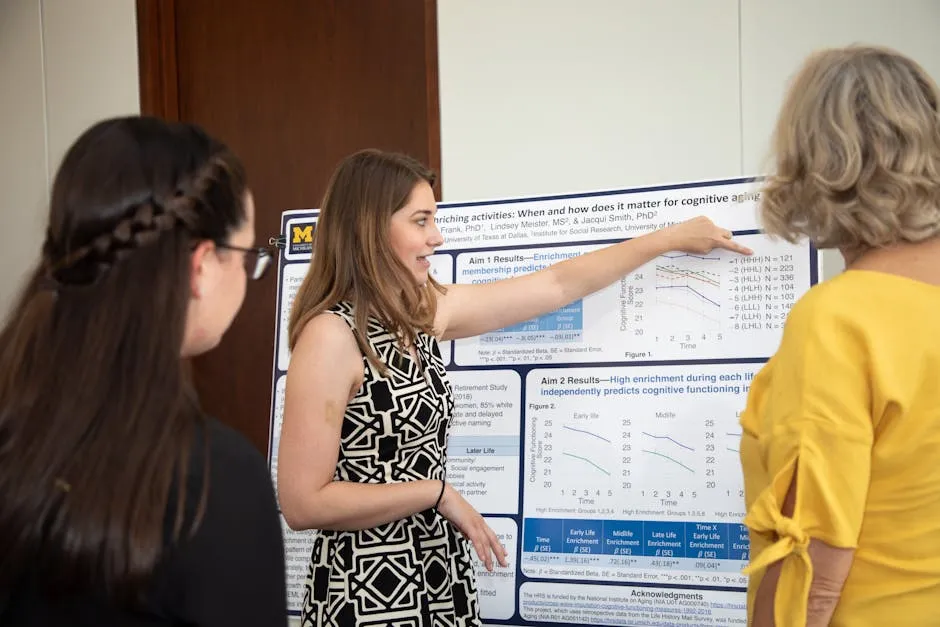Introduction
A master’s degree in statistics is like having a golden ticket. It opens doors to exciting careers across various industries. Statisticians analyze data, uncover trends, and help organizations make informed decisions. In today’s data-driven world, the importance of this degree cannot be overstated. It’s not just about crunching numbers; it’s about interpreting them in ways that drive change.
The demand for statisticians is skyrocketing. Industries such as healthcare, finance, and technology are on the lookout for skilled professionals. According to the Bureau of Labor Statistics, the job outlook for statisticians is expected to grow by a whopping 33% through 2030. That’s faster than most other occupations! With businesses and governments increasingly relying on data, there’s never been a better time to pursue a master’s in statistics.
If you’re looking to dive deeper into the world of statistics, consider picking up Statistics for Business and Economics by Paul Newbold. This book is a fantastic resource for understanding real-world applications of statistics in business.
This article aims to serve as your ultimate guide. We’ll walk you through the best master’s programs in statistics. You’ll learn about what to consider when choosing a program, from curriculum to faculty expertise. By the end, you’ll have a better understanding of where to invest your time and resources for a rewarding career in statistics.

Understanding Master’s in Statistics
What is a Master’s in Statistics?
A master’s in statistics is an advanced degree focusing on statistical theory and application. It equips students with the skills to analyze complex data sets, conduct research, and use statistical software. This degree is crucial for those looking to deepen their knowledge and enhance their career prospects.
There are two main types of master’s degrees in statistics: the Master of Science (MS) and the Master of Arts (MA). The MS is typically more research-oriented, often requiring a thesis or project. In contrast, the MA focuses more on practical applications, preparing students for immediate entry into the workforce.
Core topics in a master’s program usually include data analysis, statistical theory, applied statistics, and probability. Students learn to handle real-world data and develop critical thinking skills. This combination makes them invaluable assets in any organization, as they can turn raw data into actionable insights.
If you’re curious about data science, check out Python for Data Analysis by Wes McKinney. This book is a great starting point for mastering data analysis techniques in Python, making it a must-read for aspiring data scientists.
Career Opportunities with a Master’s in Statistics
A master’s in statistics unlocks doors to diverse industries. Statisticians are in high demand across healthcare, finance, government, and technology. In healthcare, they analyze clinical trials and patient data. In finance, they assess risks and help with investment strategies. Government agencies rely on statisticians for data-driven policy-making. Technology companies use data analysis to improve products and services.
Here are some potential job titles for graduates:
- Statistician
- Data Analyst
- Biostatistician
- Quantitative Analyst
- Market Research Analyst
Average salaries vary by role and location. Statisticians earn around $92,270 annually, while data scientists can make over $100,000. Biostatisticians often see similar figures, with salaries averaging about $95,000. Quantitative analysts in finance may earn even more, sometimes exceeding $120,000.
Gaining practical experience through internships during your program is crucial. These opportunities enhance your resume and provide real-world skills. Many programs offer connections to industries, helping students secure internships and jobs post-graduation. This hands-on experience can make a significant difference in your career trajectory.

For those interested in diving deeper into statistical methods, The Elements of Statistical Learning by Trevor Hastie is a fantastic resource. This book covers essential statistical concepts that are vital for anyone serious about data science.
Top Factors to Consider When Choosing a Program
Accreditation
Choosing an accredited institution matters immensely. Accreditation ensures that your program meets high educational standards. Employers often prefer graduates from accredited programs. They may view graduates of non-accredited programs as less qualified. Always verify that your chosen program holds proper accreditation from recognized bodies.
Accreditation can significantly impact job prospects. Many employers only consider candidates from accredited schools. This can limit opportunities if you attend a non-accredited institution. Research the accreditation of each program on your list.
Speaking of research, if you’re looking to deepen your understanding of statistical methods, consider Introduction to the Practice of Statistics by David S. Moore. This book is a staple for any statistics student, providing a solid foundation in statistical concepts.
Curriculum and Specializations
Look at the curriculum and available specializations within each program. Common specializations include biostatistics, data science, and financial statistics. Biostatistics focuses on healthcare applications, while data science encompasses big data analysis and machine learning. Financial statistics applies statistical methods in finance and investment.
Aligning your specialization with career goals is essential. If you aim to work in healthcare, biostatistics is a strong choice. Interested in tech? Data science could be your path. Evaluate how each program’s offerings match your aspirations. Programs with flexible curricula allow you to tailor your learning experience, setting you up for success in your desired field.

For those looking to specialize in data science, Data Science for Business by Foster Provost is a must-read. This book explores the essential concepts of data science and how they can be applied in business settings.
Faculty and Research Opportunities
Faculty members play a vital role in shaping a student’s educational journey. Experienced professors bring their unique insights and expertise to the classroom. Their guidance can ignite passion and curiosity in students. Imagine having a mentor who has worked on groundbreaking research. They can inspire you to pursue your own ambitious projects. The quality of faculty often correlates with program reputation.
Research opportunities are equally crucial. Hands-on projects allow students to apply their knowledge. Engaging in research can deepen understanding and encourage critical thinking. Whether it’s analyzing big data or developing new statistical methods, these experiences are invaluable. Many programs offer collaborations with industry partners, enhancing real-world relevance. Students can publish their findings or present at conferences, boosting their professional profiles.

Location and Campus Culture
The university’s location significantly impacts networking and job placement. Being situated near tech hubs or financial districts provides valuable connections. For instance, studying in San Francisco opens doors to Silicon Valley internships. Similarly, a university in New York City offers proximity to major financial institutions. These connections can be the key to landing that dream job after graduation.
Campus culture is another essential factor. A supportive environment encourages collaboration and growth. Look for programs that foster community through events and study groups. Student support services, such as counseling and academic advising, are also crucial. They ensure that students thrive both academically and personally. A vibrant campus culture can make your graduate experience enriching and enjoyable.

Cost and Financial Aid Options
Tuition costs for master’s programs in statistics can vary widely. On average, students might expect to pay between $30,000 and $40,000 annually. However, prestigious institutions may charge even more. It’s crucial to consider the return on investment for your degree.
Financial aid options are available to help offset these costs. Many universities offer scholarships based on merit or need. Graduate assistantships can also provide financial relief. These positions often include teaching or research responsibilities, which can enhance your resume. Filling out the FAFSA can unlock federal aid opportunities. Exploring all financial aid possibilities can ease the burden of tuition and make your educational goals more attainable.

For anyone wanting to improve their statistical knowledge, Practical Statistics for Data Scientists by Peter Bruce is an excellent read. It covers essential statistical concepts that every data scientist should know.
Best Master’s Programs in Statistics
Harvard University
Harvard’s Master of Arts in Statistics offers a unique blend of theory and practice. The program emphasizes statistical modeling and data analysis. Students engage in rigorous coursework and collaborative projects. Faculty include renowned experts like Professor Peter McCullagh. He is known for his work in statistical theory and applications. The program’s strengths lie in its strong research focus and the opportunity for hands-on experience through internships. Graduates find themselves well-prepared for diverse careers in academia and industry.

If you’re interested in the theory behind statistics, An Introduction to Statistical Learning by Gareth James is a great resource. This book offers a comprehensive overview of statistical learning techniques and their applications.
Johns Hopkins University
Johns Hopkins University is a powerhouse for statistical education. Its Master of Science in Applied and Computational Mathematics includes extensive statistical training. The program prides itself on small class sizes, fostering close faculty-student relationships. Notable faculty members like Professor Brian Caffo are experts in biostatistics and data science. The program’s strengths include a robust curriculum and access to cutting-edge research opportunities. Graduates often secure positions in healthcare, government, and technology sectors, making their mark in data-driven decision-making.
University of Michigan, Ann Arbor
The University of Michigan’s Applied Statistics program is highly regarded. It focuses on data analysis, statistical modeling, and machine learning. Notable faculty like Professor Edward I. George contribute to its stellar reputation. The program’s rigorous coursework ensures a solid foundation in both theory and application. Students also benefit from practical experiences through internships and collaborative projects. Its strengths lie in interdisciplinary approaches and strong connections to industries, ensuring graduates are job-ready.

North Carolina State University
North Carolina State University’s Master of Statistics program is on the rise. It offers a comprehensive curriculum that includes statistical theory, data analysis, and practical applications. The faculty features experts like Professor David Banks, who specializes in statistical modeling and consulting. The program is renowned for its focus on real-world applications and strong industry connections, particularly with companies like SAS. Graduates are well-equipped to tackle challenges in various fields, from healthcare to finance.
Columbia University
Columbia University offers a Master of Arts in Statistics that combines rigorous analysis with practical applications. The program covers essential topics like statistical modeling and data visualization. Notable faculty include Professor Andrew Gelman, a leader in statistical methodology. Columbia’s strengths lie in its urban location, providing students with ample networking opportunities. The curriculum is designed to prepare graduates for careers in academia, research, and industry, making it a top choice for aspiring statisticians.
University of Chicago
The University of Chicago’s Master of Science in Statistics program is highly selective and rigorous. It emphasizes statistical theory, data science, and computational methods. Notable faculty members include Professor Michael Stein, known for his work in spatial statistics. The program’s strengths include a strong theoretical foundation and the opportunity for interdisciplinary study. Graduates emerge as skilled analysts, ready to make an impact across various industries, including finance and healthcare.

University of Pennsylvania
The University of Pennsylvania offers a unique MBA with a focus on Statistics. This program integrates business management with statistical analysis. Notable faculty such as Professor Myron Scholes bring real-world experience to the classroom. The program’s strengths include a strong emphasis on analytics and data-driven decision-making. Graduates are well-prepared for leadership roles in various sectors, blending statistical expertise with business acumen. The collaborative environment fosters networking and career growth.
Other Notable Programs
In addition to the top programs mentioned, several other universities globally offer respected master’s degrees in statistics. The University of Toronto in Canada provides a competitive program that emphasizes statistical theory and practice. In the UK, the University of Cambridge offers a Master’s in Statistics, known for its rigorous analytical training. Australia’s University of Melbourne also boasts a respected program focusing on data science and statistical methods. These institutions are recognized for their academic excellence and strong industry connections, preparing graduates for successful careers in various fields.

Online Master’s Programs in Statistics
Overview of Online Learning
Pursuing a master’s degree online is a game-changer. First off, flexibility reigns supreme! You can study while sipping coffee in your pajamas or after a long day at work. No more rushing through traffic to make it to class. With online learning, you can learn at your own pace, fitting your studies around your life. This is particularly appealing for busy professionals or those with family commitments.
Accessibility is another perk. Geographic barriers vanish! You can enroll in programs from prestigious institutions without relocating. Imagine learning from the best while staying in your hometown. It’s like having your cake and eating it too!
Now, you might wonder about the quality of online programs. Fear not! Many online master’s programs in statistics match or even exceed traditional offerings. Accredited institutions develop these programs, ensuring high educational standards. Plus, many online instructors are seasoned professionals bringing real-world experience to the virtual classroom. So, you won’t just be staring at a screen; you’ll gain valuable insights and skills.

Top Online Master’s Programs
Texas A&M University
Texas A&M’s online Master of Science in Statistics offers a robust curriculum that combines theory and practice. The program features both thesis and non-thesis tracks, catering to diverse student needs. One strong aspect is its focus on biostatistics and data science. Students can tailor their coursework to align with career goals, making it an excellent choice for those looking to specialize. The program also emphasizes practical experience, providing students with opportunities to engage in real-world projects.

For those interested in data mining, you might want to check out Data Mining: Concepts and Techniques by Jiawei Han. This book provides a comprehensive overview of the theory and methods used in data mining, making it essential for any aspiring data scientist.
University of Kansas
The University of Kansas presents an online Master of Science in Applied Statistics, Analytics, and Data Science. This program stands out for its flexibility and engaging online format. It offers concentrations in analytics and data science, allowing students to focus on their interests. With a strong faculty and hands-on learning opportunities, students leave well-prepared for the demands of the job market. The user-friendly learning platform enhances the overall educational experience.
University of Florida
The online Master of Science in Biostatistics at the University of Florida is another top contender. Known for its strong emphasis on public health applications, this program equips students with essential statistical tools for analyzing health data. The curriculum includes courses on advanced statistical methods and data analysis. Additionally, the faculty is comprised of experts in the field, ensuring students receive top-notch instruction. This program is perfect for those aiming to make an impact in healthcare. tips for effective data analysis in economics and statistics
The online Master of Science in Biostatistics emphasizes practical applications in public health. tips for effective data analysis in economics and statistics
Columbia University
Columbia University’s Master of Arts in Statistics offers a unique blend of theoretical foundations and practical applications. The program is designed for students who wish to pursue careers in data science, finance, or research. Students can choose from a variety of electives to customize their learning experience. The urban setting provides excellent networking opportunities and access to industry leaders. With a rigorous curriculum and renowned faculty, this program is a fantastic option for aspiring statisticians.
FAQs
What is the typical duration of a master’s program in statistics?
Most master’s programs in statistics take about two years to complete. Full-time options usually last two years, while part-time students might extend their studies to three years or more.
Are online master’s programs in statistics as reputable as traditional ones?
Absolutely! Online master’s programs from accredited universities hold the same weight as their traditional counterparts. Accreditation ensures that the programs meet high-quality educational standards, making graduates equally competitive in the job market.
What are the prerequisites for applying to a master’s program in statistics?
Common prerequisites include a bachelor’s degree in statistics or a related field, a minimum GPA (usually around 3.0), and GRE scores. Some programs may also require letters of recommendation and a statement of purpose.
What skills will I gain from a master’s in statistics?
Graduates will acquire strong analytical skills, proficiency in statistical software, and the ability to manipulate and interpret complex datasets. These skills enable them to make data-driven decisions in various fields.
How much can I earn with a master’s in statistics?
Salaries for statisticians vary by industry and location, but on average, you can expect to earn around $92,270 annually. Some roles, especially in finance or data science, can command salaries exceeding $100,000.
For those curious about data visualization, Data Visualization: A Practical Introduction by Kieran Healy is an excellent guide to mastering the art of presenting data effectively.
Please let us know what you think about our content by leaving a comment down below!
Thank you for reading till here 🙂
All images from Pexels




